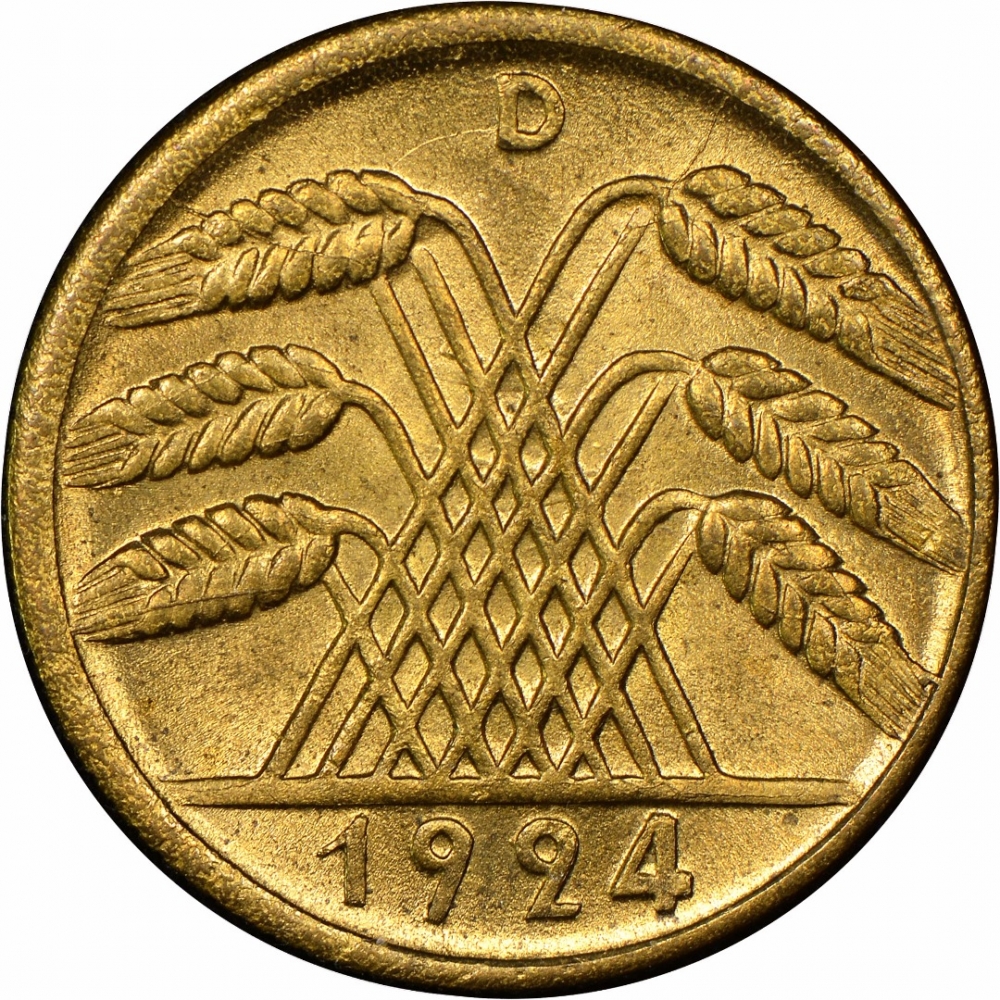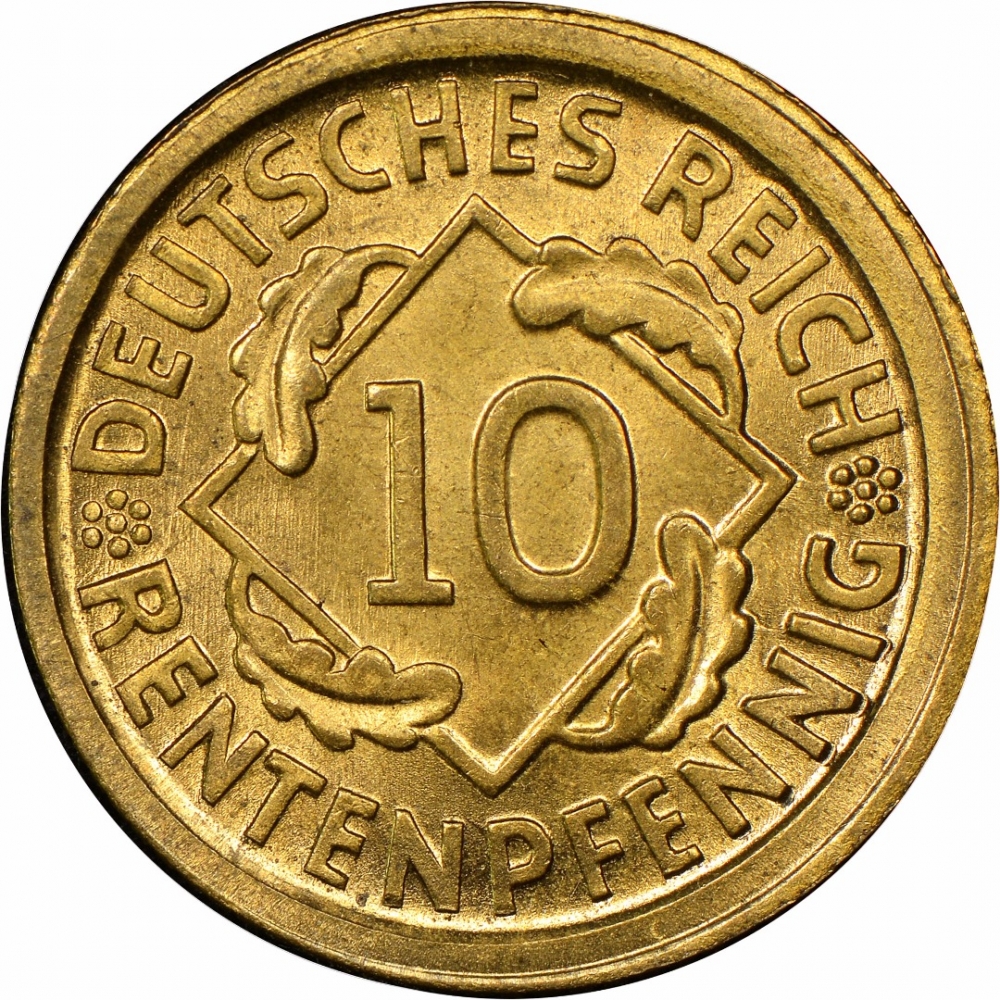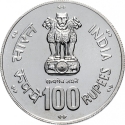You are about to finish your registration. Please check your mailbox (including spam folder). There should be a letter with a confirmation link. Check setting to make sure that your e-mail address is correct.
Send letter againDescription
Weimar Republic is an unofficial, historical designation for the German state between 1919 and 1933. The name derives from the city of Weimar, where its constitutional assembly first took place. The official name of the state was still Deutsches Reich. In its fourteen years, the Weimar Republic faced numerous problems, including hyperinflation, political extremism (with paramilitaries – both left- and right-wing); and contentious relationships with the victors of the First World War.
Obverse

|
Wheat ears drawing a pyramid. D |
|---|---|
Reverse

|
Facial value in a square with 4 oak leaves. DEUTSCHES REICH |
| Edge |
Characteristics
| Material | Aluminium Bronze |
| Weight | 3.92 g |
| Diameter | 21 mm |
| Thickness | 1.69 mm |
| Shape |
|
| Alignment | Medal |
| Mints |
Bavarian Central Mint (D) Berlin State Mint (A) Hamburg Mint (J) Karlsruhe State Mint (G) Muldenhütten Mint (E) Stuttgart State Mint (F)
|




_Kopecks_50/1961-1991_28.10.2015_20.49_01-125.jpg)
_Kopecks_50/1961-1991_28.10.2015_20.49-125.jpg)
_Ruble_1/1961-1991_15.12.2015_15.35-125.jpg)
_Ruble_1/1961-1991_15.12.2015_15.35_01-125.jpg)